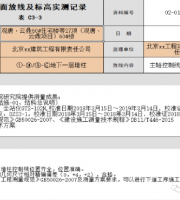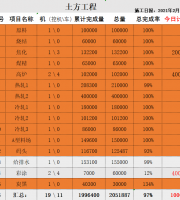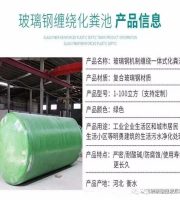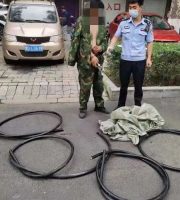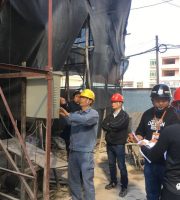C.
If there is no double-layer reinforcement at the reserved hole, the double-layer annular reinforcement shall be welded into a skeleton.
The tenon shall go back first and then go forward.
The embedded steel pipes at the pull points of the external frame shall be cut by gas cutting, not by electric welding, and mortar shall be poured to the floor in time to remove the embedded boxes and loose objects around the holes.
If the large edge of the hole is more than 100mm, the formwork must be erected for grouting.
The double-layer annular reinforcement around the hole shall be uniformly processed and manufactured in the reinforcement processing area.
The concrete is poured and tamped tightly.
Before acceptance, clear the mortar scattered at the column foot and ash accumulation platform during masonry, and paste sponge adhesive tape at the junction of column and wall; After self inspection, the supervisor shall be asked for acceptance and record.
The template adopts the tool type template with strong universality, and the height and width shall be adjustable when customizing the template; The inner and outer sides of the screw hole shall be manually pressed into the hole with mortar of long strip.
1、 Key points of construction process of constructional column A Clean the floor, find out the axis and control line marked during the construction of the main structure, and snap out the wall sideline, auxiliary control line and structural column positioning line.
After the main body concrete and measurement work are completed, the hole wall mortar and transparent adhesive tape can be cleaned, the hole wall is roughened with hand-held equipment, and then fixed with a set template.
The tenon and tie bar shall be reserved according to the design and specification requirements.
The leveling course shall be plastered and polished twice, and the slope shall face the ponding collection area..
G.
Twenty four hours after the floor concrete pouring, open the cover plate of the embedded barrel, and release the fixing piece from the embedded barrel; When the flat die is removed, the fixed piece shall be recovered in time for turnover.
The structural column formwork shall be cleaned with sponge tape without residue; The pouring mouth shall be carefully chiseled and polished in place, and the surface shall be flat without coarse aggregate pits.
The concrete strength of the finished product effect pump pipe and measuring hole is one grade higher than the original design.
The formwork shall be removed 2 days after the pouring, and the formwork shall be maintained during the period.
The tenon shall be 60mm out.
After the formwork is removed, the hole concrete pouring quality shall be checked and the quality defects shall be repaired in time.
E.
After the repair of the outside of the hole, the 1.0 mm thick JS waterproof coating shall be timely applied in layers and times.
If the large edge of the hole is less than 100mm, the semi dry hard micro expansive fine stone concrete or cement mortar can be used for layered, staged grouting or manual filling.
B.
D.
During floor concrete pouring, the floor management personnel shall take care of the embedded barrel to avoid the displacement or deformation of the embedded barrel caused by the direct contact of the pouring and vibrating equipment with the embedded barrel.
There is no height difference between the new and old concrete surfaces of the floor slab, and the surface is flat without obvious color difference.
After the formwork to be finalized is removed, the plastic pad at the bottom of the slab shall be cleaned in time and repaired with cement mortar, and then the screw holes shall be manually filled in sections from the upper part of the slab with dry and hard micro expansion mortar.
The height of each tenon shall not exceed 300mm.
The formwork shall be cleaned with sponge tape.
After cleaning, the plain cement slurry interface shall be treated.
E.
Finished product effect Fine aggregate concrete for masonry and concrete wall holes shall be poured densely without honeycombs and pits, JS shall be uniform in thickness, without cracks on the surface, and the pouring mouth shall be chiseled and leveled without coarse aggregate pits.
In this process, the fine aggregate concrete and cement mortar are added with expansion agent and waterproof agent.
C.
The position of vertical reinforcement shall be adjusted according to the positioning line of structural column.
F.
The finished structural column concrete is dense, and the surface is smooth and clean; The tenon is closely occluded with the masonry, without holes, honeycomb, mortar leakage and wall pollution.
F.
The fine aggregate concrete pouring of holes for formwork erection must be vibrated by small vibrators, and cannot be replaced by simple methods.
3、 Key points of process flow of external wall hole repair A A special person shall be assigned to be responsible for the pouring of the reserved holes and screw holes of the external wall masonry, external frame tie points of the concrete wall, external cantilevered channel steel, and on-site guidance and supervision of the whole process of hole repair.
The micro expansion waterproof cement mortar for external wall screw grouting shall be free of shrinkage cracks with the matrix, the size and color of the round cake on the surface shall be consistent, and there shall be no pollutants such as cement slurry around the hole.
Because the size of pump pipe and measuring hole is small, the floor reinforcement here is not cut off, and the method of bending around the hole is adopted; Large holes shall be treated according to design requirements.
B.
If the deviation of vertical reinforcement is large, chemical planting reinforcement can be adopted, and the planting reinforcement shall meet the requirements of relevant specifications.
After the coarse aggregate is not loose (3-5 days after pouring), the pouring bevel shall be chiseled and polished with a hand-held polishing machine after chiseling; The sponge rubber strip shall be cleaned with a dust shovel.
B.
Standardization of construction process (II) I.
No holes or perforations shall be left on the wall.
Clean and brush plain cement slurry around the reserved hole, and pour semi dry hard micro expansive fine stone concrete twice; Set mold closure at the bottom of the plate; After completion, the water storage test shall be conducted for more than 24 hours.
The formwork shall be at least 80% new without peeling and loose edges; Clean the formwork surface and apply release agent before formwork erection; The split screw shall be used for fixing, and the tension shall be appropriate.
During pouring, small manual feeding electric vibrator shall be used to vibrate in layers (300mm), and other simple vibration methods shall not be used instead.
C.
D.
Before the leveling course, the defects of the base course shall be repaired with waterproof mortar.
The bottom of the water trap of the drainage pipe fittings on the same floor shall be flat on the structural plate, and the water in the waterproof leveling layer, waterproof layer and filling layer shall be smoothly drained.
H.
G.
G.
H.
D.
C.
2、 Key points of construction process of floor construction tunnel A The lower diameter of the conical measuring hole in the floor slab is 150mm, the upper diameter is 180mm, and the lower diameter of the conical pump pipe hole is 220mm, the upper diameter is 250mm; It shall be fixed after the positioning and rechecking of the main control line are correct.
Before pouring, the formwork and column side masonry shall be wetted.
Before hole formwork erection and screw hole repair, clean and flush the hole perimeter to ensure that the hole perimeter is clean and free of mortar and oil stain.
After the hole wall is wet, it shall be tamped layer by layer with slightly expanded fine stone concrete higher than the original design mark; V-shaped groove shall be reserved around the upper screw, and the surface shall be plastered and polished before the final setting of fine aggregate concrete.
Key points of waterproof process of drainage toilet on the same floor A The water stop structure shall be provided around the special pipe section passing through the floor.
F.
The time of formwork loosening and removal shall be strictly controlled to avoid premature damage to the surface of the constructional column, resulting in pitting of the column.
Two days after the removal of the formwork, the pouring bevel shall be manually chiseled and polished flat.
H.
E.
The formwork shall not be loosened or removed within 24 hours after the hole concrete is poured.
The slab bottom shall be free of formwork shifting, mortar leakage, honeycomb, loose concrete, etc., and there shall be no elevation difference with the slab bottom.
B.

